COVID-19: TCTMD’s Dispatch for November Week 4
We’re curating a list of COVID-19 research and other useful content, and updating it regularly.

Since March 2020, TCTMD reporter Todd Neale has been writing up breaking news and peer-reviewed research related to COVID-19 every weekday. In July 2021, we transitioned to Mondays, Wednesdays, and Fridays. If you have something to share, tell us. All of our COVID-19 coverage can be found on our COVID-19 Hub.
November 26, 2021
More than twice as many people as last year passed through airport checkpoints one day ahead of the US Thanksgiving holiday, “more than any other day during the pandemic,” the New York Times reports. Numbers came close but did not match air travel volumes of 2019. Air travelers within the US are not required to be vaccinated, but are urged to delay travel until fully dosed and to be tested before and after flying.
Scientists at the World Health Organization (WHO) met today to discuss a new strain of SARS-CoV-2 that is making headlines around the world. A Nature News feature yesterday delves into what’s known and what’s feared about the variant, first identified in Botswana and known as B.1.1.529, now dubbed “Omicron” by the WHO. “The variant harbors a large number of mutations found in other variants, including Delta, and it seems to be spreading quickly across South Africa,” Ewen Callaway reports. “Scientists are also trying to understand the variant’s properties, such as whether it can evade immune responses triggered by vaccines and whether it causes more or less severe disease than other variants do.”
The New York Times recaps what’s known about vaccine efficacy and transmissibility with Omicron as of Friday, noting that countries around the world are scrambling to halt flights from Southern Africa. Stock markets are also “tumbling” in response to the news.
 The European Medicines Agency’s human medicines committee CHMP has recommended an expansion of the indication for the Pfizer/BioNTech mRNA vaccine (Comirnaty) to children age 5 to 11. According to data cited in the announcement, the lower 10-µg dose in this younger age group produced an antibody response similar to that seen with the higher 30-µg dose in 16- to 25-year-olds. “Of the 1,305 children receiving the vaccine, three developed COVID-19 compared with 16 out of the 663 children who received placebo. This means that, in this study, the vaccine was 90.7% effective at preventing symptomatic COVID-19 (although the true rate could be between 67.7% and 98.3%).”
The European Medicines Agency’s human medicines committee CHMP has recommended an expansion of the indication for the Pfizer/BioNTech mRNA vaccine (Comirnaty) to children age 5 to 11. According to data cited in the announcement, the lower 10-µg dose in this younger age group produced an antibody response similar to that seen with the higher 30-µg dose in 16- to 25-year-olds. “Of the 1,305 children receiving the vaccine, three developed COVID-19 compared with 16 out of the 663 children who received placebo. This means that, in this study, the vaccine was 90.7% effective at preventing symptomatic COVID-19 (although the true rate could be between 67.7% and 98.3%).”
A gradual increase in COVID-19 infection following vaccination likely begins to kick in around the 90-day mark after a second dose of the Pfizer/BioNTech vaccine, Israeli researchers report in the BMJ. Their analysis of electronic health records for more than 80,000 vaccinated adults showed that just 1.3% of subjects tested positive within 21 to 89 days following their second dose, rising to 2.4% after 90 to 119 days, 4.6% after 120 to 149 days, 10.3% after 150 to 179 days, and 15.5% after 180 days or more.
Merck and Ridgeback Biotherapeutics issued a press release today with a disappointing update on their MOVe-OUT study of molnupiravir, an investigational oral antiviral medicine for COVID-19. In patients with mild-to-moderate COVID-19 at risk for worsening illness, “molnupiravir reduced the risk of hospitalization or death from 9.7% in the placebo group (68/699) to 6.8% (48/709) in the molnupiravir group, for an absolute risk reduction of 3.0% (95% CI: 0.1, 5.9; nominal P value=0.0218) and a relative risk reduction of 30% (relative risk 0.70; 95% CI: 0.49, 0.99). Nine deaths were reported in the placebo group, and one in the molnupiravir group.” As a Reuters story explains, that efficacy is considerably less than the rosier picture—a 50% relative risk reduction—provided by the study sponsors following an interim analysis which led to the early stoppage of the trial. The US Food and Drug Administration’s advisory committee is reviewing the data next week to decide whether or not to authorize the medication for use.
Writing in the New England Journal of Medicine, William J. Murphy, PhD, and Dan L. Longo, MD, explain how diverse immune responses might explain why some people have allergic reactions—like myocarditis and thrombosis/thrombocytopenia—to different vaccines, and others do not. “One way of thinking about the complexity of the immune response is through the lens of anti-idiotype immune responses,” they write. Quoted in a press release that helps explain the theory, Murphy said there is “immense need for more basic research to understand the complex immunological pathways at play” as well as “what it takes to keep the protective responses going, as well as . . . the potential unwanted side effects of both the infection and the different SARS-CoV-2 vaccine types, especially as boosting is now applied.”
Also in the NEJM, a research letter summarizes an analysis from Qatar comparing severity of primary COVID-19 infections with later reinfections among more than 353,326 unvaccinated subjects with PCR-confirmed infections, matched by sex, age, nationality, and calendar week of infection. “Reinfections had 90% lower odds of resulting in hospitalization or death than primary infections,” Laith J. Abu-Raddad, PhD, and colleagues write. “Four reinfections were severe enough to lead to acute care hospitalization. None led to hospitalization in an ICU, and none ended in death. Reinfections were rare and were generally mild, perhaps because of the primed immune system after primary infection.”
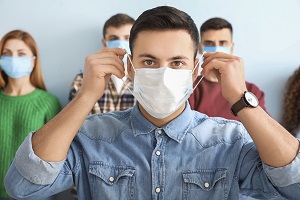 One of the strategies used to mitigate the impact of COVID-19 as well as its social and economic impacts has been to ‘shield’ the elderly while allowing younger people to comingle, since they are less likely to suffer severe illness. Now a study in Nature Communications suggests that when COVID-19 started to rebound in France in 2020, it took just 4 weeks for infections to reach the ‘shielded’ older individuals. “When the epidemic remains manageable,” they write, “targeting those most contributing to transmission is better than shielding at-risk individuals. Pandemic control requires an effort from all age groups.”
One of the strategies used to mitigate the impact of COVID-19 as well as its social and economic impacts has been to ‘shield’ the elderly while allowing younger people to comingle, since they are less likely to suffer severe illness. Now a study in Nature Communications suggests that when COVID-19 started to rebound in France in 2020, it took just 4 weeks for infections to reach the ‘shielded’ older individuals. “When the epidemic remains manageable,” they write, “targeting those most contributing to transmission is better than shielding at-risk individuals. Pandemic control requires an effort from all age groups.”
There’s more and more evidence that universal postdischarge anticoagulation in patients with COVID-19 offers marginal clinical benefits at an increased risk of bleeding, but in patients with a history of VTE and other criteria, use of extended thromboprophylaxis might have a better chance of showing benefit over harm, investigators this week in JAMA Network Open. TCTMD’s Todd Neale has the details.
November 24, 2021
COVID-19 numbers are rising across the United States as Americans make preparations for Thanksgiving, ABC News reports. And that’s especially concerning because last year the months following the holiday saw the most substantial spread of the virus of the pandemic, with nearly 17 million infections and more than 220,000 deaths recorded between November and January, the story notes. Currently, there are an average of about 93,000 new COVID-19 cases each day, which represents an increase of 46% since late October, and 32 states have experienced an increase in daily cases of 10% or more in the last 2 weeks.
Meanwhile, Europe continues to battle a surge in infections, with the European office of the World Health Organization (WHO) warning that “it expects 25 countries to feel high or extreme stress on hospital beds and that ICUs in 49 of 53 countries are likely to feel high or extreme stress between now and March 1,” CIDRAP News reports. “Cumulative reported deaths are projected to reach over 2.2 million by spring next year, based on current trends,” the WHO said in its press release, adding that reaching that figure isn’t inevitable if people focus on getting vaccinated and using preventive measures. “All of us have the opportunity and responsibility to help avert unnecessary tragedy and loss of life, and limit further disruption to society and businesses over this winter season,” an official said. Reuters has more on the dire European situation.
South Korea is experiencing a spike in cases as well, recording more than 4,000 new daily cases for the first time in the pandemic, the Associated Press reports: “The Korea Disease Control and Prevention Agency said most of the new 4,116 cases reported Wednesday came from the capital Seoul and its surrounding metropolitan region, where an increase in hospitalizations has created fears about possible shortages in intensive care units.”
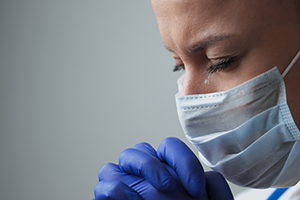 Two studies in JAMA Network Open provide insights into the mental health toll of the pandemic on healthcare workers. A study of Italian healthcare workers surveyed at the beginning of the pandemic and then roughly a year later reveals that symptoms of depression, anxiety, insomnia, and posttraumatic stress declined over time. “Prolonged work with patients with COVID-19 was significantly associated with mental health outcomes, whereas quitting work as a frontline healthcare worker was significantly associated with [a] decrease in mental health issues.” And the other details the “moral injury” experienced by healthcare workers throughout 2020, uncovering “the themes of fear, fatigue, isolation, alienation, betrayal, and community among healthcare professionals in the prevaccine period of the COVID-19 pandemic.”
Two studies in JAMA Network Open provide insights into the mental health toll of the pandemic on healthcare workers. A study of Italian healthcare workers surveyed at the beginning of the pandemic and then roughly a year later reveals that symptoms of depression, anxiety, insomnia, and posttraumatic stress declined over time. “Prolonged work with patients with COVID-19 was significantly associated with mental health outcomes, whereas quitting work as a frontline healthcare worker was significantly associated with [a] decrease in mental health issues.” And the other details the “moral injury” experienced by healthcare workers throughout 2020, uncovering “the themes of fear, fatigue, isolation, alienation, betrayal, and community among healthcare professionals in the prevaccine period of the COVID-19 pandemic.”
Canada has given full approval for use of the single-shot Janssen vaccine from Johnson & Johnson in adults, the first such clearance for the vaccine anywhere in the world, Reuters reports. The country granted full approval to the vaccines from Moderna and Pfizer/BioNTech in September, and authorized use of the latter vaccine in children ages 5 to 11 and as a booster in adults earlier this month.
The BBV152 Bharat Biotech COVID-19 vaccine from India was only about 50% effective at preventing symptomatic SARS-CoV-2 infection during the peak of the second wave in the country, which occurred between April 15 and May 15, 2021, researchers report in the Lancet Infectious Diseases. That figure, from a case-control study, is lower than what was previously reported out of a phase III trial (78%). “Our findings, together with other emerging data, point to the possible immune evasive potential of the Delta variant of SARS-CoV-2, and underscore the need to ensure complete vaccination is done in a timely manner, while continuing to implement and adhere to the nonpharmacological interventions to prevent the spread of the virus, such as physical distancing and face masks,” the authors say.
One in eight patients hospitalized with COVID-19 develop some form of shock, according to the American Heart Association’s COVID-19 Cardiovascular Disease Registry, and regardless of whether the shock type is cardiogenic, distributive, or a mixture of the two, mortality rates are extremely high: around two-thirds of those with the condition die. “The best strategy to decrease risk of cardiogenic shock with COVID-19 remains vaccination, and this is especially important for patients with a history of heart disease,” the lead author of the study, published in Circulation: Heart Failure, told TCTMD’s Caitlin Cox.
Colchicine does not appear to add any benefit to standard care in patients with COVID-19, according to a meta-analysis in RMD Open. In pooled results from six RCTs, colchicine didn’t reduce mortality, the need for ventilatory support, ICU admission, length of hospital stay, or serious adverse events. Overall adverse events and diarrhea were more frequent in patients treated with the anti-inflammatory drug.
CIDRAP News reports on two studies published Tuesday in JAMA Network Open describing disparities in COVID-19 deaths in the United States last year. One shows higher death rates in people from racial/ethnic minority groups versus their white counterparts, even within levels of educational attainment. And the other demonstrated that patients with schizophrenia had increased odds of mortality compared with people without major psychiatric conditions and those with either anxiety or mood disorders.
 New Zealand has set a date for when it will reopen to tourists after nearly 2 years of travel restrictions: April 30. According to Reuters, travelers will have to be fully vaccinated and will be required to self-isolate for 7 days upon arrival. “Vaccinated New Zealanders and residence visa holders in neighboring Australia can travel to New Zealand from Jan. 16, while vaccinated New Zealanders and residence visa holders from most other countries will be allowed in from Feb. 13.”
New Zealand has set a date for when it will reopen to tourists after nearly 2 years of travel restrictions: April 30. According to Reuters, travelers will have to be fully vaccinated and will be required to self-isolate for 7 days upon arrival. “Vaccinated New Zealanders and residence visa holders in neighboring Australia can travel to New Zealand from Jan. 16, while vaccinated New Zealanders and residence visa holders from most other countries will be allowed in from Feb. 13.”
November 22, 2021
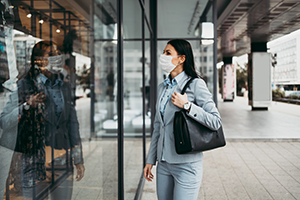 New Zealand will be ending tight restrictions aimed at stemming the spread of SARS-CoV-2—which have seen Auckland, its largest city, in lockdown for more than 90 days—and “will adopt a new system of living with the coronavirus” starting December 3, Reuters reports. “New Zealand remained largely COVID-19 free until August but has been unable to beat an outbreak of the highly infectious Delta variant, forcing [Prime Minister Jacinda] Ardern to abandon an elimination strategy and switch to treating the virus as endemic.”
New Zealand will be ending tight restrictions aimed at stemming the spread of SARS-CoV-2—which have seen Auckland, its largest city, in lockdown for more than 90 days—and “will adopt a new system of living with the coronavirus” starting December 3, Reuters reports. “New Zealand remained largely COVID-19 free until August but has been unable to beat an outbreak of the highly infectious Delta variant, forcing [Prime Minister Jacinda] Ardern to abandon an elimination strategy and switch to treating the virus as endemic.”
On Friday, the US Centers for Disease Control and Prevention (CDC) officially backed the expansion of COVID-19 booster shot eligibility to include all adults at least 6 months out from full vaccination with shots from Pfizer/BioNTech or Moderna, following authorization by the US Food and Drug Administration (FDA) and advice along those lines from a group of advisors. The New York Times has more.
India is not yet considering use of booster doses “as many in the country have been naturally infected and the government believes two doses of a vaccine offers sufficient protection for now,” Reuters reports. The government “will instead concentrate on having most of India’s 944 million adults complete a two-dose vaccination by January before shifting their focus to a big expansion in exports, said the sources who are involved in vaccine-policy discussions.” Overall, 81% of adults in India have received at least one vaccine dose, and 43% have received two.
The European Medicines Agency (EMA) said Monday it’s evaluating data on use of a booster dose of the single-shot Janssen vaccine from Johnson & Johnson to be given at least 2 months after the first dose. The outcome of the evaluation is expected within weeks.
The vaccine from Pfizer/BioNTech remains 100% effective against COVID-19 for at least 4 months after the second dose among adolescents ages 12 to 15, according to follow-up data from a phase III trial released Monday via press release. The shot is currently authorized for emergency use in this age group, and the companies said this new information will be used to support applications for full approval.
 On Friday, Health Canada authorized use of the vaccine from Pfizer/BioNTech for children ages 5 to 11. A government official said the first doses for this age group were set to arrive in the country on Sunday, CBC News reports. “Health Canada authorized a two-dose regimen to be administered 3 weeks apart,” the story notes. “The National Advisory Committee on Immunization (NACI), however, is recommending that the spacing between doses be increased to at least 8 weeks, as evidence has been growing that a longer interval generates a more-robust immune response.”
On Friday, Health Canada authorized use of the vaccine from Pfizer/BioNTech for children ages 5 to 11. A government official said the first doses for this age group were set to arrive in the country on Sunday, CBC News reports. “Health Canada authorized a two-dose regimen to be administered 3 weeks apart,” the story notes. “The National Advisory Committee on Immunization (NACI), however, is recommending that the spacing between doses be increased to at least 8 weeks, as evidence has been growing that a longer interval generates a more-robust immune response.”
Unrest related to protests of COVID-19-related restrictions has flared up in various parts of the world (all Associated Press). French President Emmanuel Macron warned of a “very explosive” situation in its Caribbean island territory Guadeloupe after protests escalated to rioting and looting. A large protest in Brussels, Belgium, turned violent, and Dutch police arrested more than 30 people in various towns in the Netherlands a day after a protest sparked an “orgy of violence.”
Low- and middle-income countries participating in clinical trials of COVID-19 vaccines are not being fairly treated when it comes to accessing the shots after they’re authorized, according to a study in JAMA Network Open. “Including low- and middle-income countries in research can be an important goal; however, inclusion should correspond with fair access to research benefits, to help avoid exploitation,” the authors write.
COVID-19 is associated with a greater risk of stillbirth, data in Morbidity and Mortality Weekly Report affirm. Overall, women with COVID-19 had nearly double the risk of stillbirth (RR 1.90), although the magnitude of the association increased after the Delta variant became predominant. “These findings underscore the importance of COVID-19 prevention strategies, including vaccination before or during pregnancy,” the authors say.
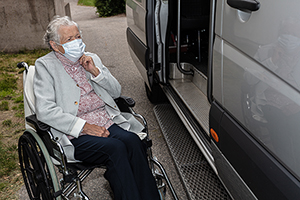 Postdischarge venous thromboembolic events in patients hospitalized for COVID-19 were more frequent in those with a history of venous thromboembolism, a peak D-dimer level greater than 3 μg/mL, and a predischarge C-reactive protein level greater than 10 mg/dL, according to a study in JAMA Network Open. Use of anticoagulation therapy after discharge was associated with fewer events. “Although extended thromboprophylaxis in unselected patients with COVID-19 is not supported, these findings suggest that postdischarge anticoagulation may be considered for high-risk patients” with the features identified in this study, “if their bleeding risk is low,” the authors conclude.
Postdischarge venous thromboembolic events in patients hospitalized for COVID-19 were more frequent in those with a history of venous thromboembolism, a peak D-dimer level greater than 3 μg/mL, and a predischarge C-reactive protein level greater than 10 mg/dL, according to a study in JAMA Network Open. Use of anticoagulation therapy after discharge was associated with fewer events. “Although extended thromboprophylaxis in unselected patients with COVID-19 is not supported, these findings suggest that postdischarge anticoagulation may be considered for high-risk patients” with the features identified in this study, “if their bleeding risk is low,” the authors conclude.
Todd Neale is the Associate News Editor for TCTMD and a Senior Medical Journalist. He got his start in journalism at …
Read Full Bio


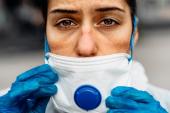

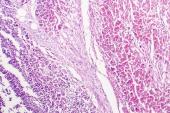
Comments